The sharing economy is infiltrating every segment of consumer life, and the dining experience is no exception. The growth in popularity of food halls is a great example of how the sharing economy has influenced our approach to dining. Food halls went from obscurity to one of the hottest restaurant trends across the globe. In 2010, there were just 25 food halls in the entire US, but there are now more than 180 food halls with new food halls opening every month. Combining quality, affordability, and convenience, they offer consumers a new and exciting dining experience.
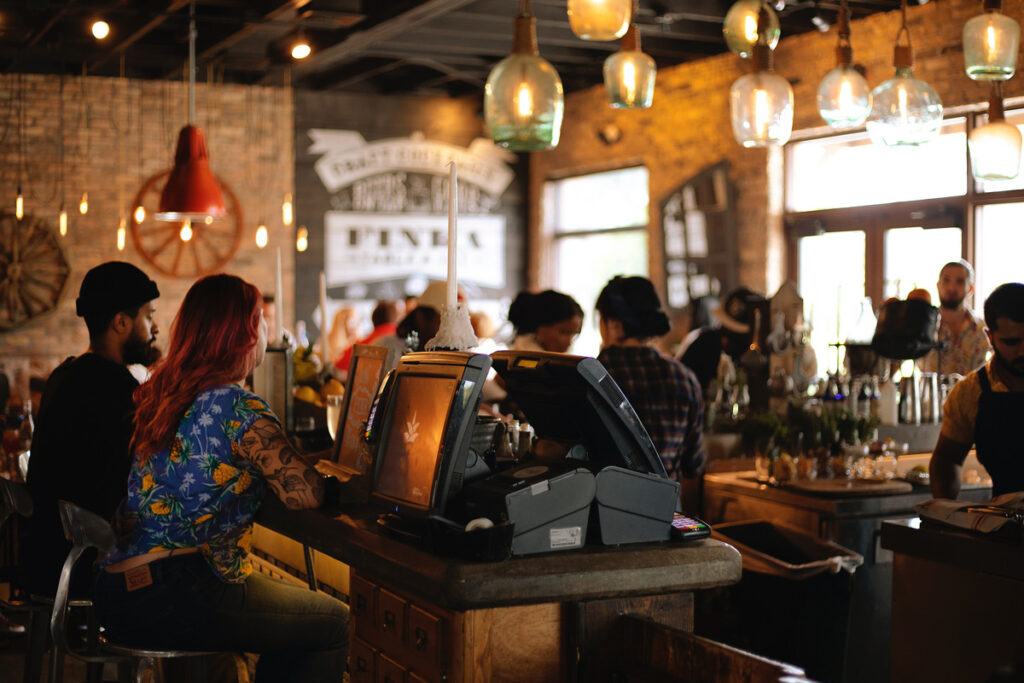
What Are Food Halls?
A food hall is a new type of dining experience, somewhat similar to a cafeteria or food court, where customers choose their own foods from multiple vendors, but nothing like either experience. In fact, Touch Bistro says food halls “are flipping the old food court model on its head. Food is no longer an amenity but the main reason why people visit these areas.”
One of the unique features of the food halls that are quickly showing up in cities around the world is their ability to showcase different local cuisines. The food hall concept is growing in popularity with consumers who want choice and convenience without sacrificing comfort and experience. They’re growing in popularity with restaurant owners who can introduce their brand and signature dishes to a new market without assuming all of the risk and cost of a full-blown restaurant.
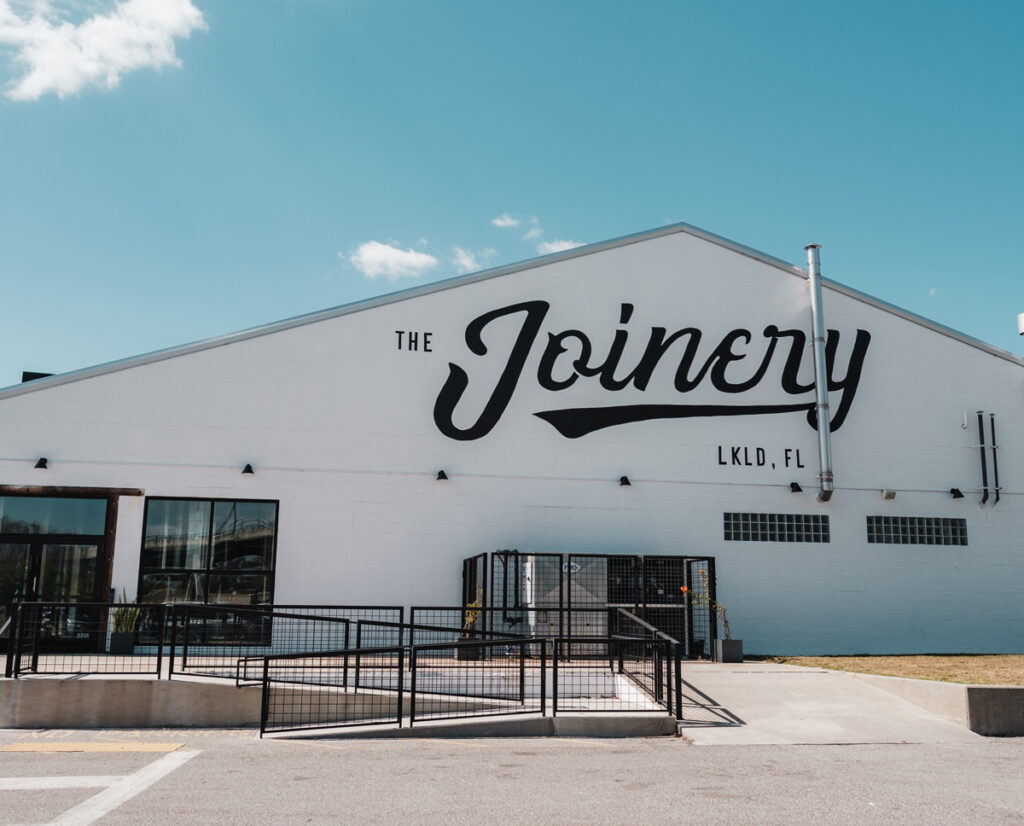
The Joinery Food Hall in Lakeland, Florida
Why Are Food Halls Growing So Popular?
From the customers’ point of view, food halls offer an opportunity for experimentation. But for the restaurant, there are several cost savings to be realized.
Customers love food halls for the unique experience they offer. The traditional food court model features mostly fast food options from a variety of different brands, but the food hall levels up the traditional food court by offering a seated restaurant feel with quick meal choices. It’s this unique blend of variety and comfort that draws consumers in. They have access to a wide range of options, can eat on the go, and still feel like they’ve had a great sit-down meal.
As Bryan Dyches explained in VMSD, “Unlike a traditional restaurant or a QSR, food halls are relatively simple places to operate with little front-of-house staff. They offer a perfect test kitchen site to see how the market receives new twists on classics. Another interesting aspect is the use of technology systems, from payment to social media platforms, to drive customer queues that wouldn’t be possible in a large, formal environment.”
- Bryan Dyches
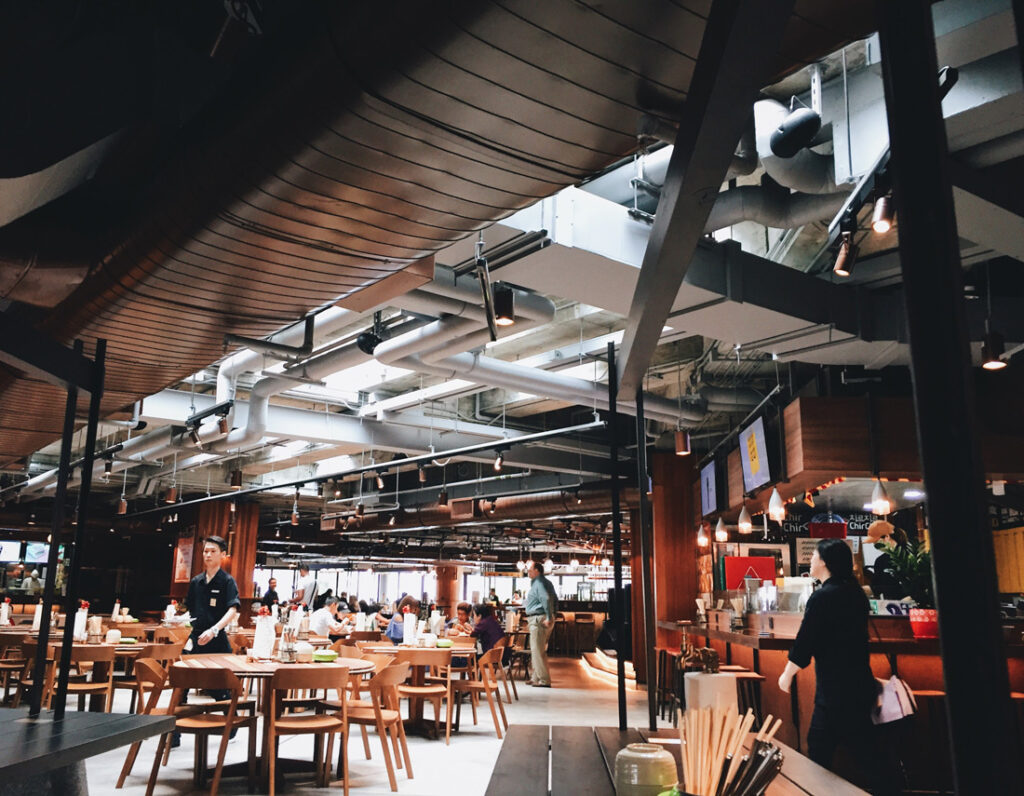
Why Participate in Food Halls?
Restaurants who participate in food halls gain several benefits. These benefits include shared expenses that lower costs, reduced risk, consistent consumer traffic, built-in infrastructure, and exposure. For customers, it’s a novel experience that is different every time. Customers are excited about the unique food experiences that happen in a food hall. They have access to a wide variety of food that is convenient and affordable. That variety keeps them coming back again and again. “Not everyone in a party wants to eat burgers,” explains Didier Souillat, co-CEO of Time Out Market, in London in an interview about food halls with Foodservice and Hospitality. “At Time Out Montreal, people sitting at the same table can choose from more than 200 dishes. It’s a great communal environment that brings together people from offices, the local community, and tourists.”
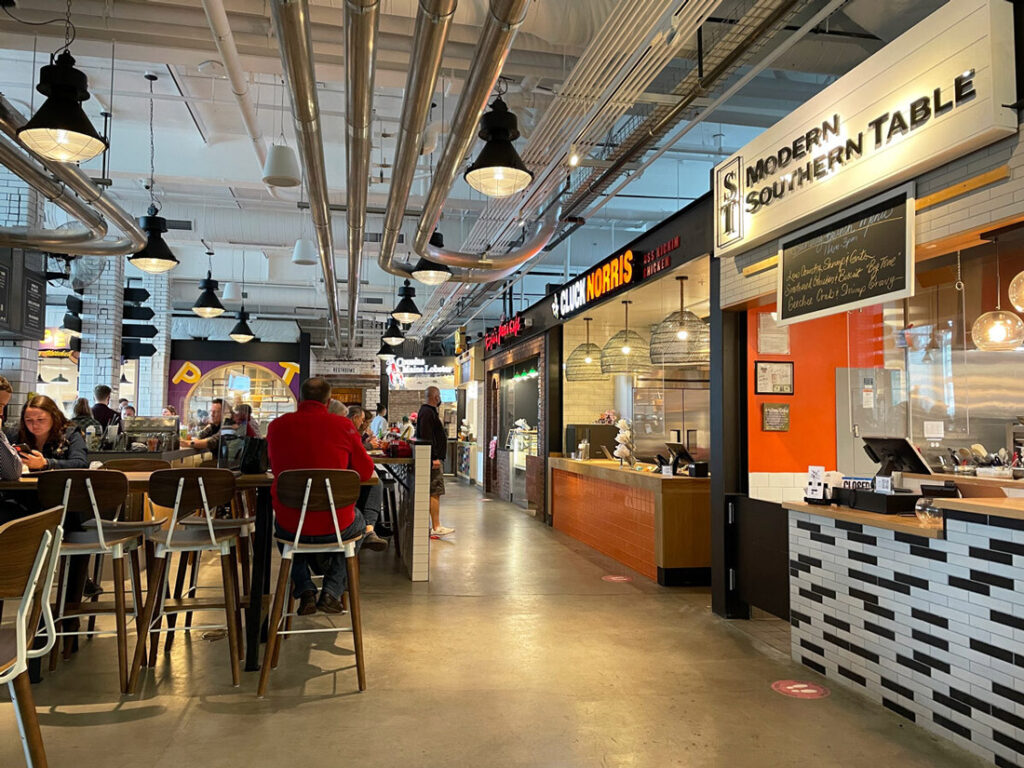
Food Halls Are a Safe Bet for Restaurant Industry Development
Food halls are the perfect place to showcase local cuisine. They are a low-risk place for food professionals to launch new ventures and test new dishes. Retail developers are also seeing advantages with food halls. They increase revenues, have a higher chance of success, and improve the value of real estate property. In an interview with Food Now, Phil Colicchio, executive managing director and food, beverage and entertainment expert at Cushman & Wakefield says that food halls are “the lowest risk that a food professional can take in opening up new ventures.” The minimal fixed seating in food halls allows for rearrangement to host events, making them a multipurpose amenity. Corporate events at food halls are an inexpensive way to build company culture.
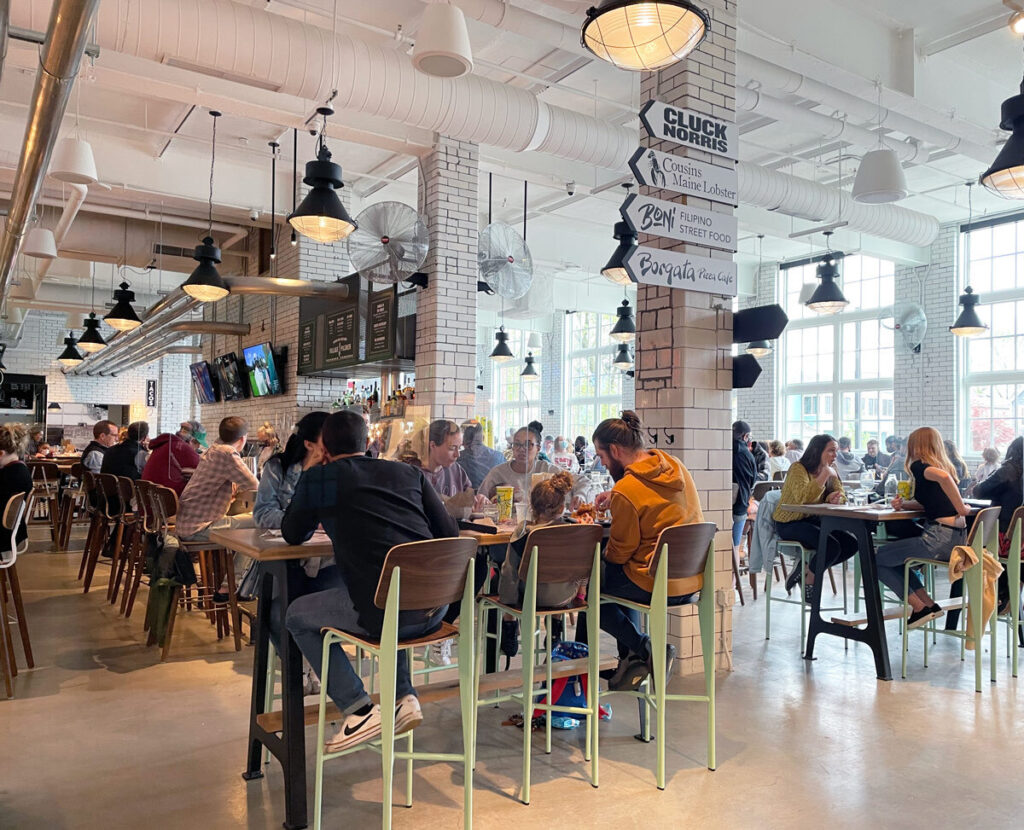
Popular Food Halls in North America to Add to Your Bucket List
Columbus – Budd Dairy Food Hall was named one of the top 10 new food halls in the country by Fodor Travel. Located in our favorite city, Budd Dairy features eight chef partners, two rotating kitchens, and bars on three levels.
New York – The Hugh is “Midtown East’s culinary collective,” featuring more than 15 restaurants and an art gallery. It is named for the building’s architect, Hugh Stubbins.
Montreal – Time Out Market in Centre Eaton is a unique food hall featuring “an editorial curation by Time Out magazine, a British media company, brought to life in a food hall.” Food from around the city is featured, including Chef Paul Toussaint’s Haitian cuisine.
L.A. – Grand Central Market is a historic landmark that was a food hall before food halls were cool. It’s a “30,000 square-foot arcade encompasses a food emporium and retail marketplace” with entertainment venues and a weekly Bazaar.
Lakeland – The Joinery, described as a modern food hall and craft brewery, is Lakeland’s first food hall. The bright and welcoming space features a variety of food vendors, shops, and even a cocktail bar. Check it out on the banks of Lake Mirror in downtown Lakeland, Florida.
Boise – Pitched as “Boise’s culinary hub,” The Warehouse is “a place that celebrates the entrepreneurs and tastemakers who put Boise on the culinary map.” With ten eateries, including Piedaho, Bao Boi, and Freshie’s Lobster, retail spaces including a rotating pop-up shop, a movie theater, and the Treefort Music Hall entertainment venue, it’s almost a city within a city.
Food halls are a growing trend that offer a unique dining experience for customers and a low-risk option for food professionals. The food hall model’s versatility and adaptability make it a multipurpose amenity that appeals to both customers and real estate developers.





